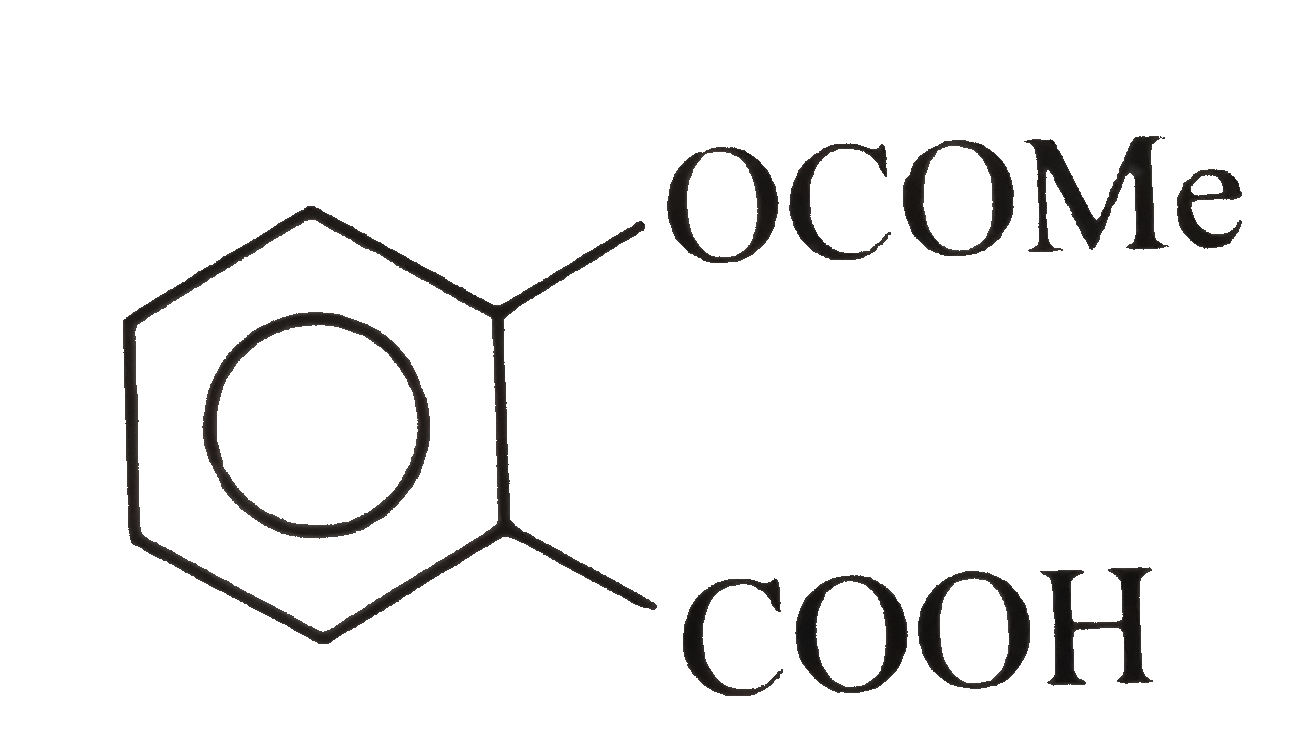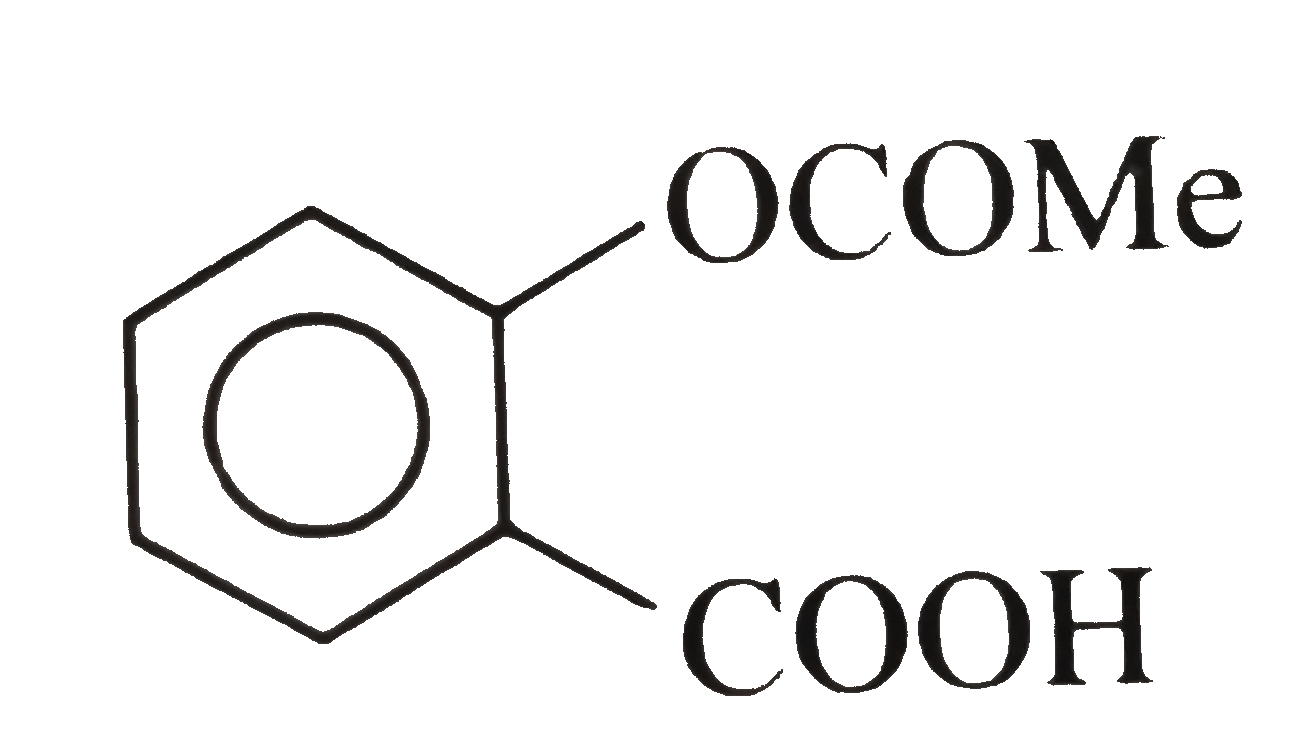The analgesic drug ibuprofen (A) is chiral and exists in (+) and (-) froms. One enantiomer is physiologically active, while the other is inactive. The other is inactive. The structure of ibuprofen is given below.

The number of π - bonds in (A) is :
2
3
4
5
The correct Answer is:C
(33 σ- bonds and 4π- bonds)
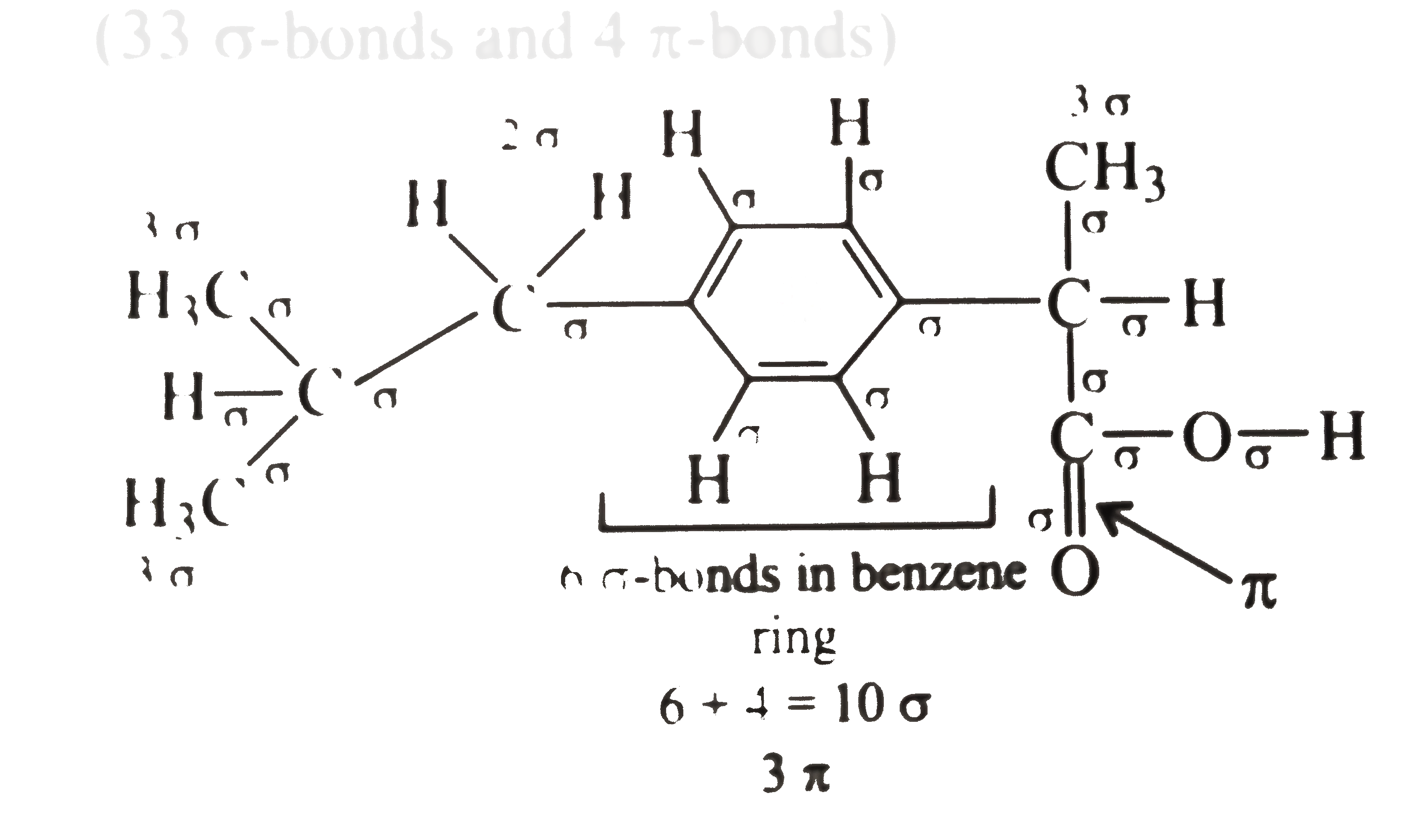
Topper's Solved these Questions
- CLASSIFICATION AND NOMENCLATURE OF ORGANIC COMPOUNDSBOOK - CENGAGE CHEMISTRYCHAPTER - CLASSIFICATION AND NOMENCLATURE OF ORGANIC COMPOUNDSEXERCISE - Multiple corrcct Answers Types
11 Videos
- CLASSIFICATION AND NOMENCLATURE OF ORGANIC COMPOUNDSBOOK - CENGAGE CHEMISTRYCHAPTER - CLASSIFICATION AND NOMENCLATURE OF ORGANIC COMPOUNDSEXERCISE - Single correct Answer Type
44 Videos
- CLASSIFICATION AND NOMENCLATURE OF ORGANIC COMPOUNDSBOOK - CENGAGE CHEMISTRYCHAPTER - CLASSIFICATION AND NOMENCLATURE OF ORGANIC COMPOUNDSEXERCISE - Concept Application Type
7 Videos
- CHEMICAL EQUILIBRIUMBOOK - CENGAGE CHEMISTRYCHAPTER - CHEMICAL EQUILIBRIUMEXERCISE - Archives (Subjective)
11 Videos
- GENERAL ORGANIC CHEMISTRYBOOK - CENGAGE CHEMISTRYCHAPTER - GENERAL ORGANIC CHEMISTRYEXERCISE - Analytical and Descriptive
1 Videos
Similar Questions
Knowledge Check
The analgesic drug ibuprofen (A) is chiral and exists in (+) and (-) froms. One enantiomer is physiologically active, while the other is inactive. The other is inactive. The structure of ibuprofen is given below.
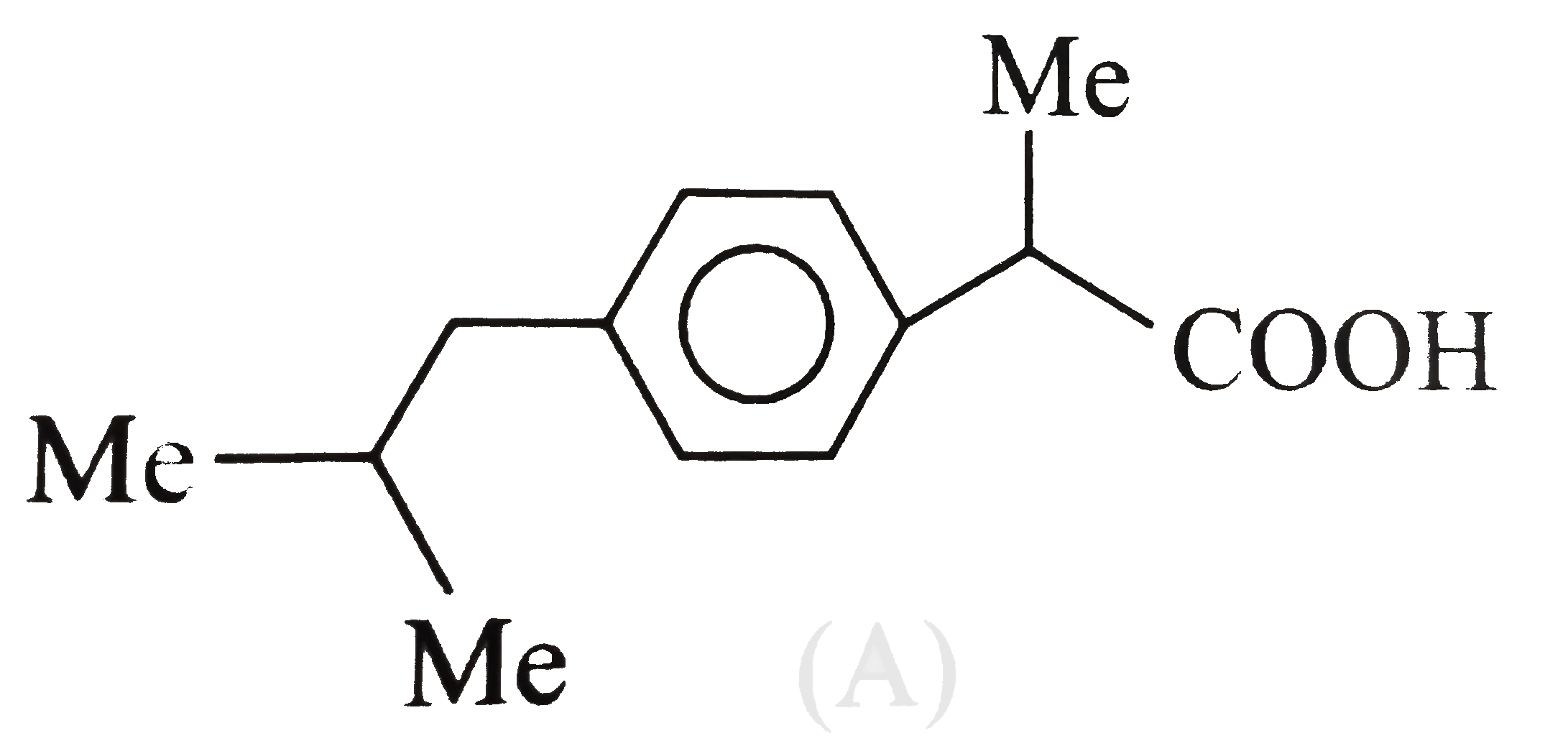
The number of σ-bonds in (A) is:A30B31C32D33The analgesic drug ibuprofen (A) is chiral and exists in (+) and (-) froms. One enantiomer is physiologically active, while the other is inactive. The other is inactive. The structure of ibuprofen is given below.
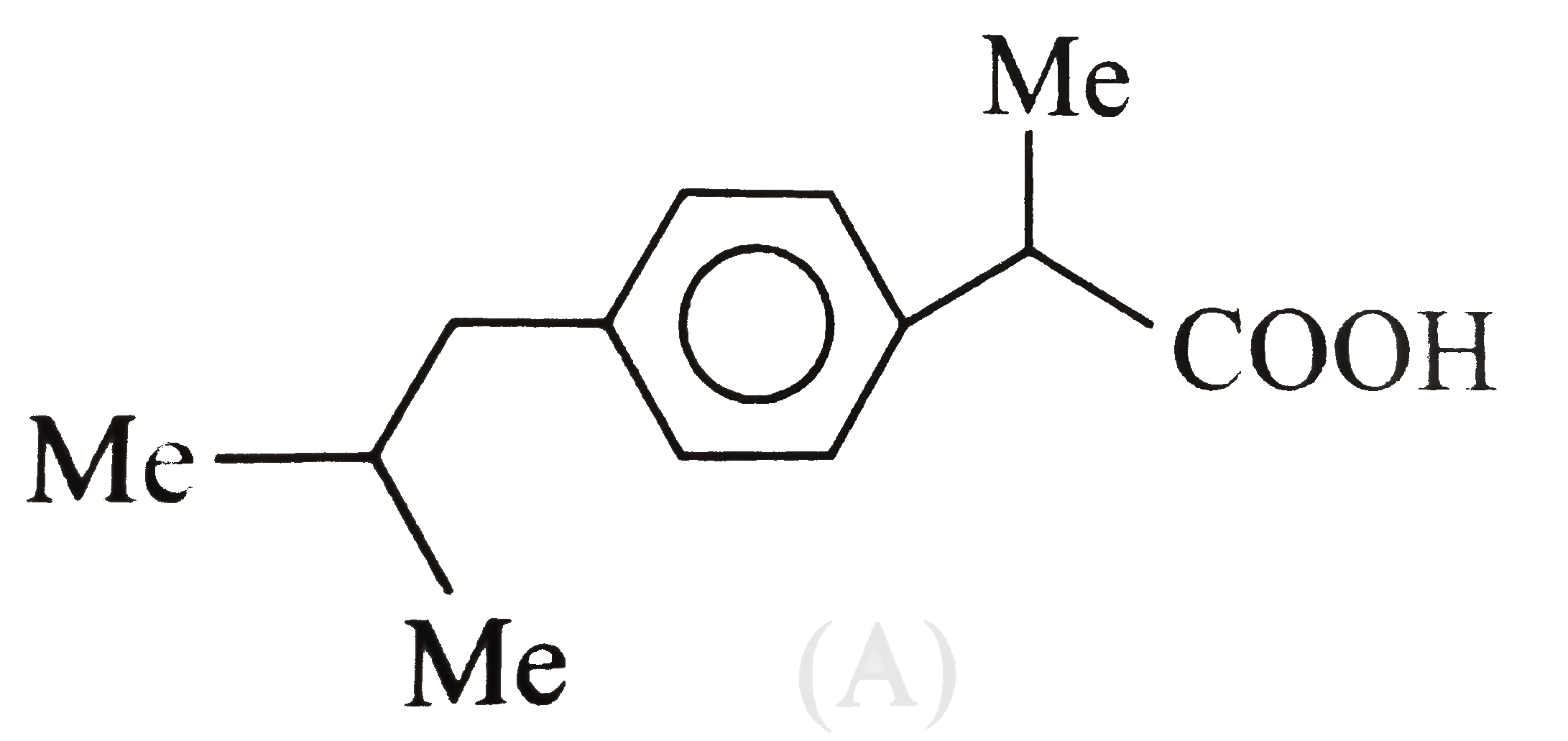
The principal functional group in (A) is:APheny1B−−COOH groupCIsopropy1DBoth (a) and (b)The analgesic drug ibuprofen (A) is chiral and exists in (+) and (-) froms. One enantiomer is physiologically active, while the other is inactive.The structure of ibuprofen is given below.
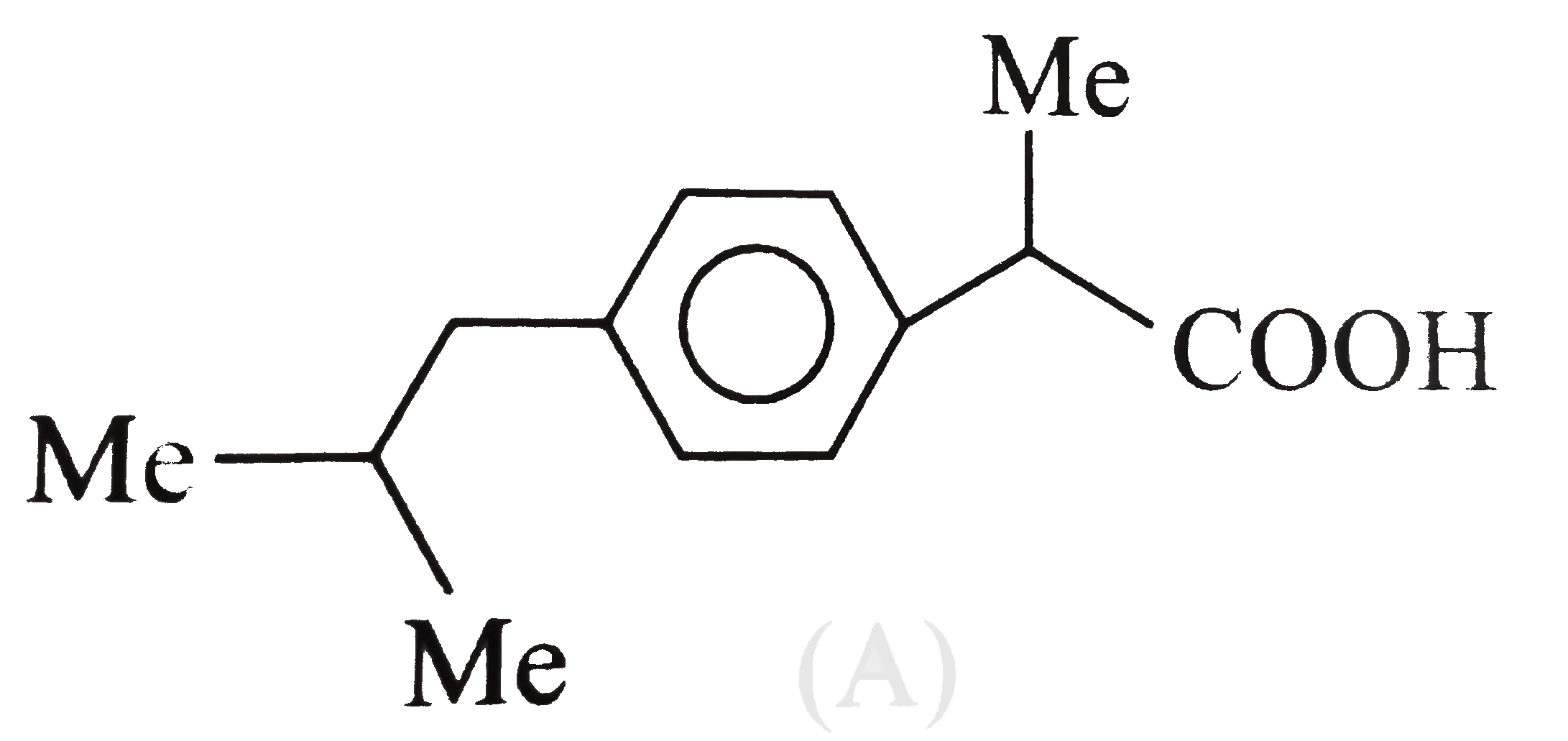
The IUPAC name of (A) is:A3-(p-Isobutyl phenyl) propanoic acidB2-(p-Isobutyl phenyl) propanoic acidC3-(p-sec-Butyl phenyl) propanoic acidD2-(p-sec-Buty1 pheny1) propanoic acid
The number of π bonds in the structure given below are : (NC)2C=C(CN)2
View SolutionWhich one is different from the other four given below ?
View SolutionThe total number of optically inactive products obtained from the complete ozonolysis of the compound given below here is

View SolutionThe S-enantiomers of ibuprofen is reponsible for its pain-relieving properties. Which one the following structures shown below is (S)-ibuprofen ?
View SolutionRead the passage given below and answer the following questions:
The objects which are non-superimposable on their mirror image (like a pair of hands) are said to be chiral and this property is known as chirality. Chiral molecules are optically active, while the objects, which are, superimposable on their mirror images are called achiral. These molecules are optically inactive. The above test of molecular chirality can be applied to organic molecules by constructing models and its mirror images or by drawing three dimensional structures and attempting to superimpose them in our minds. There are other aids, however, that can assist us in recognising chiral molecules. One such aid is the presence of a single asymmetric carbon atom. In these questions a statement of assertion followed by a statement of reason is given . Choose the correct answer out of the following choices.
Assertion (A): The stereoisomers related to each other as non-superimposable mirror images are called enantiomers
Reason (R): Enantiomers possess identical physical properties.
View Solution

